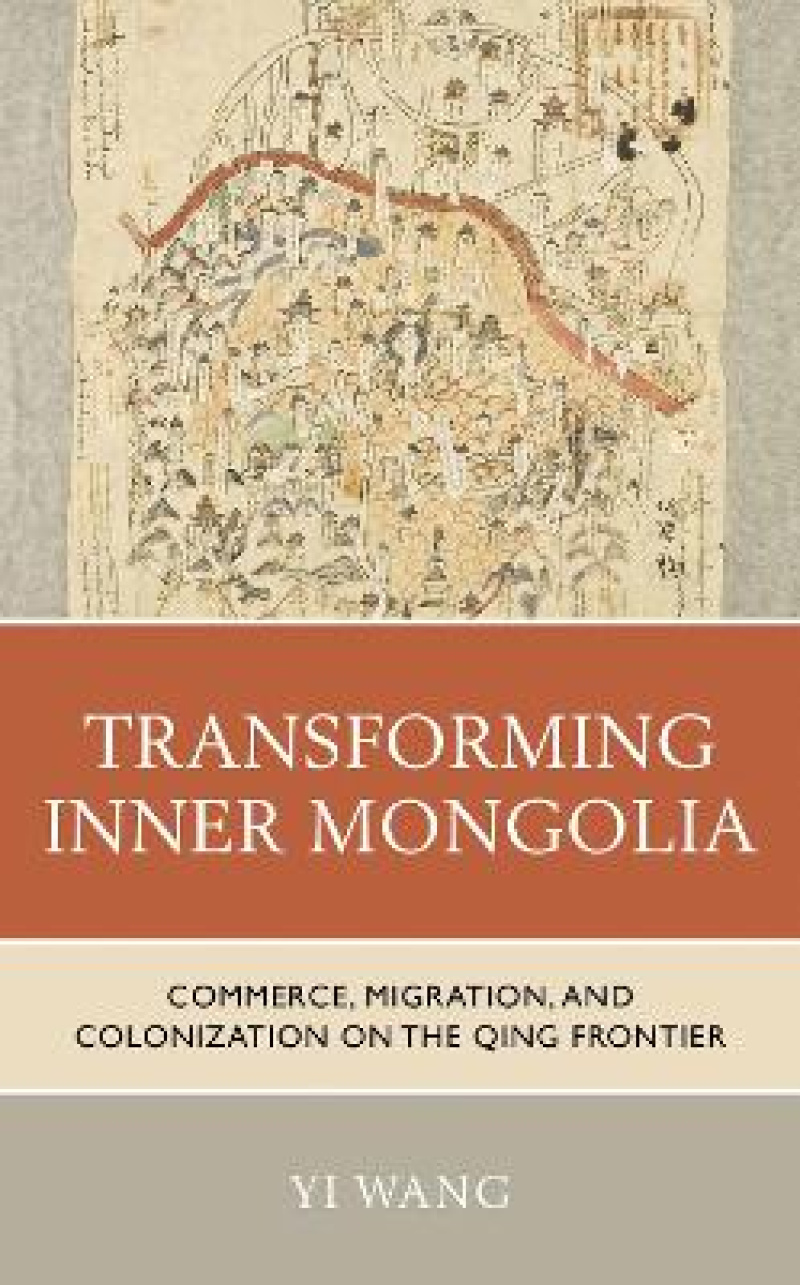Yi Wang puts the colonization of Inner Mongolia in a new context: world markets, capital, land, and labor. Her documentation of capitalist agriculture in the Hetao region makes a powerful intervention in debates over China's premodern economy.
- Christopher Atwood, University of Pennsylvania,
In this theoretically sophisticated study, Yi Wang marshals a stunning array of sources—from corporate legal documents to folk songs—to reveal the fascinating history of the colorful cast of characters—including Manchu officials, Chinese irrigation entrepreneurs, Russian merchants, and Belgian missionaries—who played a role in integrating Inner Mongolia into the Qing state. In so doing, she reveals not only how the global processes of imperialism, capitalism, environmental degradation, migration, and nationalism shaped this particular borderland region but also how Inner Mongolia was the crucible that forged modern China.
- Johan Elverskog, Southern Methodist University,
If you haven't thought of the Chinese as settler-colonists, think again. Yi Wang explores in remarkable depth one of the great frontier movements of modern times, the Chinese colonization of Mongolia, with a passion reminiscent of Owen Lattimore. Her careful account of how the Mongols lost their lands—under relentless pressure by Chinese merchants, the global economy, and the centralizing Chinese state—gives us a clear example of how Chinese ‘secondary imperialism’ worked.
- Peter C. Perdue, Yale University,
Current Chinese policies in the Inner Mongolian Autonomous Region have brought the plight of the Mongolian population in the People’s Republic of China to a wider audience. In truth, current events are but a continuation of oppression that began long before the establishment of the People’s Republic. It is, in essence, a legacy of changes that occurred during the Qing Empire. Inner Mongolia has long been a borderland between steppe and sown, but not until the 19th century did it attain a majority sedentary population. In this study, Wang amply demonstrates that the transformation of Inner Mongolia was not a monocausal event. Rather, it was the culmination of Qing policy, environmental and economic issues, and the unintended consequences of the presence of Christian missionaries in the region and European imperialism. These factors resulted in clashes between the Mongolian population and Han immigrants, which transformed Inner Mongolia not only culturally and demographically, but also economically, environmentally, politically, and socially. Wang’s work is an exemplar of the New Qing History and will benefit anyone interested in the region, regardless of era.This book is highly recommended for advanced undergraduates through faculty.
Choice Reviews
Transforming Inner Mongolia is a textbook that reads like a novel. It presents complex aspects of a completely foreign culture and makes them readable and understandable to any reader, even those with very little knowledge of Chinese or Asian history. The book also reiterates the importance of the primary dictates of expansion and migration – commerce and resources. We highly recommend this thought-provoking book.
Books for Congress
Transforming Inner Mongolia is meticulously researched and eloquently written, which stands as a timely addition to the rapidly expanding body of scholarship on Qing borderlands and their integration into modern China. Encompassing many inspiring arguments, it will surely stimulate more studies on the perennial subjects of peripheries, frontiers, and borderlands.
Asian Affairs
This book analyzes the social, economic, and political impact of Han Chinese migration into the borderlands that became Inner Mongolia during the Qing period. Linking local history to global movements, Yi Wang traces Inner Mongolia’s integration into what would become the nation-state of China and from there into a global capitalist economy.
List of Figures
List of Maps
List of Tables
List of Abbreviations
Dynasties, Weights, and Measures
Acknowledgments
Introduction
1 A Changing Frontier: Inner Mongolia in Context
2 Merchants, Monetization, and Networking: Han Commercial Expansion in the Steppe
3 Beyond the Western Pass: Sojourning and Settlement Across Han-Mongol Borders
4 The Rise of Land Merchants: Irrigation, Commercialization, and Local Autonomy in Hetao
5 Cultivation for Salvation: Missionaries, Migrants, and Catholic Expansion
6 Moving People to Strengthen the Border: Official Reclamation and State Building
Conclusion
Bibliography
Glossary
Index
